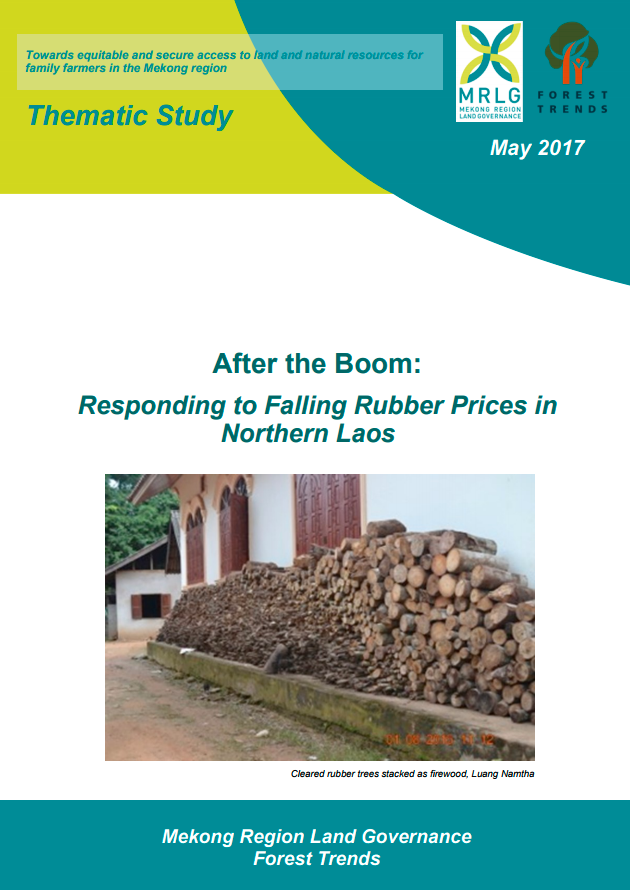Location
Mission
Forest Trends works to conserve forests and other ecosystems through the creation and wide adoption of a broad range of environmental finance, markets and other payment and incentive mechanisms. Forest Trends does so by:
- Providing transparent information on ecosystem values, finance, and markets through knowledge acquisition, analysis, and dissemination;
- convening diverse coalitions, partners and communities of practice to promote environmental values and advance development of new markets and payment mechanisms; and
- demonstrating successful tools, standards, and models of innovative finance for conservation.
Members:
Resources
Displaying 1 - 5 of 9After the Boom: Responding to Falling Rubber Prices in Northern Laos
Rubber prices in northern Laos have fallen significantly over the last few years, eroding much of the initial enthusiasm of both farmers and government officials about rubber providing a way out of poverty for poor upland farmers. This thematic study examines responses to this price drop by Lao rubber growers and state institutions in northern Laos. It also examines the reasons that prices are what they are, given that price volatility was identified as a risk during the mid-2000s, and that in at least some cases, steps were taken to protect contract farmers from falling prices.
Conversion timber, forest monitoring, and land-use governance in Cambodia
This report presents an overview of national patterns and practices of forest land clearance during the 2012-2013 dry season as a basis for discussing challenges for FLEGT and REDD+ in Cambodia. The report maps and describes the geography of forest land allocations in relation to the major forest formations, land concessions, protected areas, the national forest estate, and the reported concession ownership.
Conversion, forest monitoring and land-use governance in Cambodia
This report presents an overview of national practices of forest land clearance during the 2012-2013 dry season, as a basis for discussing the challenges for FLEGT and REDD+ in Cambodia posed by land conversion and conversion timber. The report maps and describes the geography of forest land allocations in relation to the major forest formations, land concessions, protected areas, the national forest estate, and the reported concession ownership.
Commercial Agriculture Expansion in Myanmar: Links to Deforestation, Conversion Timber, and Land Conflicts
In Myanmar, as in other countries of the Mekong, it is widely acknowledged that the clearing of forests to
make way for the expansion of commercial agricultural fields is increasingly the leading driver of deforestation,
alongside legal and illegal logging, and the clearance of forest areas to make way for infrastructure projects
such as roads and hydropower dams. While the conversion of forests for agricultural development has been
occurring for many decades, it is the unprecedented rate of this conversion that is now so astounding — as
Legal Review of Recently Enacted Farmland Law and Vacant, Fallow and Virgin Lands Management Law - Improving the Legal & Policy Frameworks Relating to Land Management in Myanmar
The Farmland Law and the VFV Law were approved by Parliament on March 30th, 2012. There have
been a few improvements compared to previous laws such as recognition of
non-rotational taungya as
a legitimate land-use and recognition that farmers are using VFV lands without formal recognition by
the Government. However overall the Laws lack clarity and provide
weak protection of the rights of
smallholder farmers in upland areas and do not explicitly state the equal rights
of women to register




